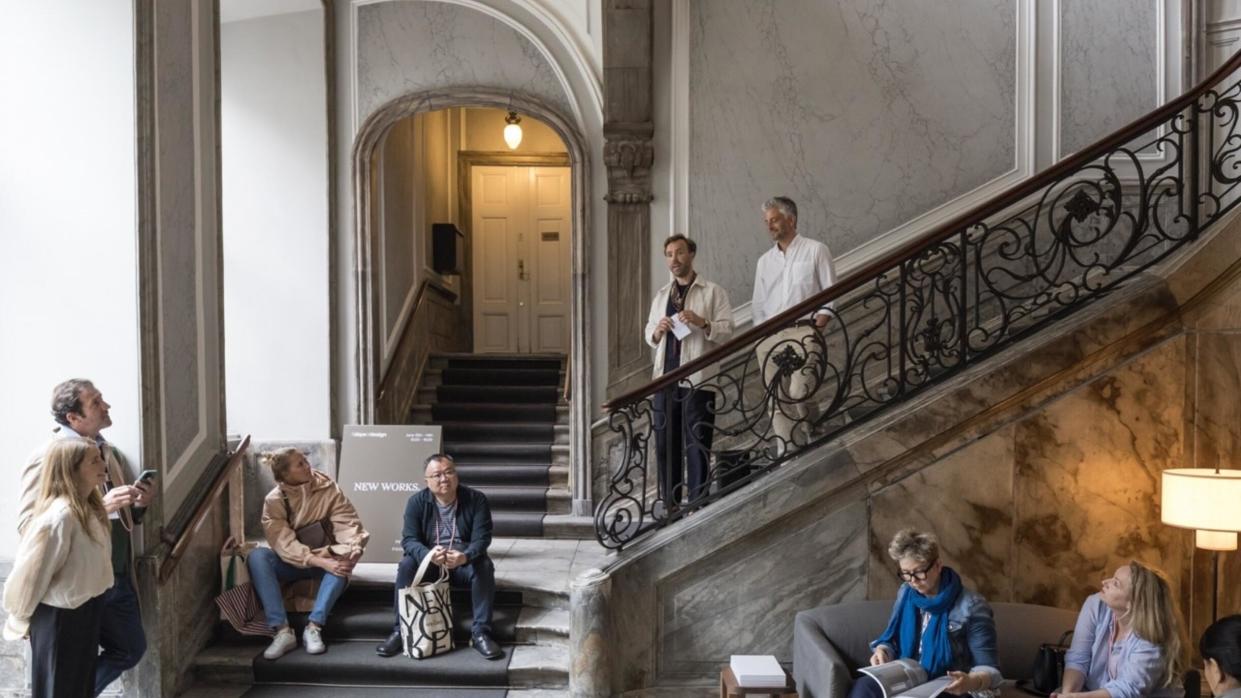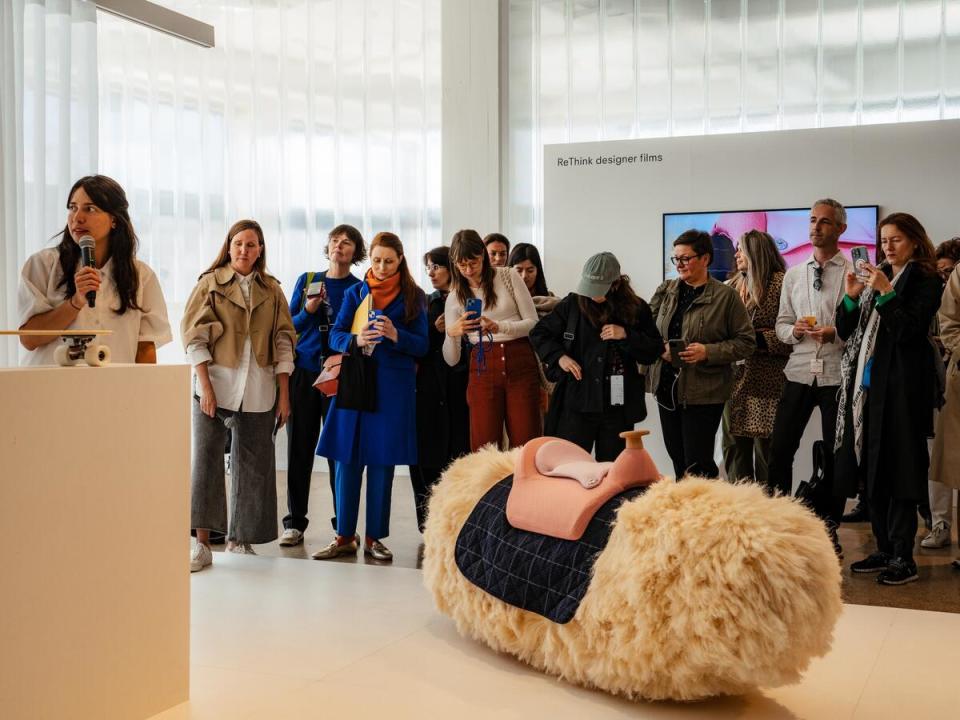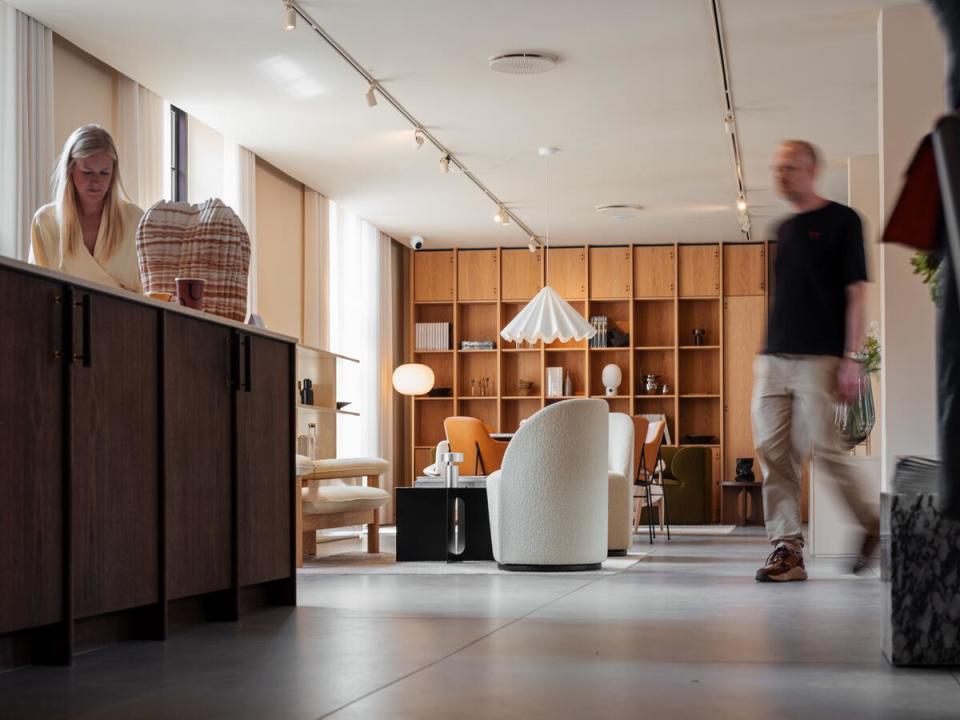How Copenhagen’s 3 Days of Design became the low-key alternative to giant design fairs

Weekly Feature | Jun 18, 2024
Neither chilly temps nor punishing rain dampened spirits at the 3 Days of Design festival, which just completed its 11th edition in Copenhagen. Despite uncooperative weather, visitors ferried up and down canals, sipped natural wine and were coaxed into bicycling—all while taking in the best design the Danish capital has to offer.
In recent years, 3 Days of Design has cemented its reputation as a more intimate, understated alternative to the behemoth international festivals. While some observers complain that Salone del Mobile along with the broader Milan Design Week has become an incoherent mess of lines and sponsored activations, Copenhagen offers the promise of a tidy, focused event that’s centered squarely on design and connections rather than spectacle.
According to the festival’s founder and managing director Signe Byrdal Terenziani, that DNA has been there from the beginning. “We want the connection and we want to be close,” she says. The concept was hatched in 2013, while Terenziani was overseeing marketing for the Danish furniture manufacturer Montana. She banded together with fellow Danish brands including Erik Jørgensen, Anker & Co and Kvadrat to open an exhibit at Copenhagen design hub Pakhus 48. That small coterie of companies grew into a festival that now draws hundreds of exhibitors—each of which pays a sliding-scale fee commensurate with their overall profit in order to participate—and thousands of international visitors who attend for free. (The fair does not offer official attendance figures.)
“It’s quite a transparent and democratic system, as we show small up-and-coming brands next to bigger companies, which might pay a larger fee,” says Terenziani. This year the fair expanded to 410 exhibitors, up from just over 200 only a few years ago—a pace of growth that can make it tricky to maintain the festival’s unique, independent spirit. “The idea was to avoid making huge booths with lots of frills, only to tear them down,” she adds, referring to the wasteful excess that often comes from staging trade shows.
Terenziani and her staff have developed a list of stringent criteria that each potential exhibitor must meet before being accepted into the show, from sustainability and originality (no copycats) to a focus on experiential installations and original storytelling. “Besides the pink balloons and the parties, there’s so much more behind it,” she says of the process of picking a diverse group of international brands.
This year the event presented 11 districts located in distinct neighborhoods, including Nordhavn, Marmorkirken and Refshaleøen, where new furnishings channeled a minimal yet mod vibe. A mix of new product launches and reproductions of Scandi classics from stalwart brands like Fritz Hansen and Louis Poulsen were juxtaposed with emerging talents like &Tradition, File Under Pop and Sheyn, all stylishly installed in landmark buildings, historic palaces, museums, showrooms and hidden spaces in and around the Danish port city.

Brands also leveraged the fair to show off new techniques and sustainability initiatives. Among the most promising was Finnish textile manufacturer Marimekko, making its first foray into 3 Days of Design with a new plant-based material called Vireo, which was developed by Hemp Bio under Kvadrat’s Innovation Lab. The adaptable material was sewn into bags and upholstered on sofas and chairs by Bunn Studio, all displayed at Marimekko’s Danish flagship—a remarkable step forward, given the challenges brands often encounter putting sustainable textiles into mass production.
The success of 3 Days of Design follows two recent threads in the design world. One is a desire for exhibitors at trade shows to make real connections with designers and consultants—to build relationships, not just buzz. (Salone, by contrast, has become the ultimate hype machine.) The other is a swell of events launched in smaller cities that focus on intimacy, curation and a connection to the local design culture—for example, Lisbon by Design or the Mexico Design Fair in Puerto Escondido, both of which are modest in size but have become a draw for attendees looking for a unique experience and to get off the beaten path.
Copenhagen’s fair might have also gotten a boost from the pandemic. In 2022, citing Covid concerns, Salone’s organizers pushed the Milanese event from April to June—placing it immediately prior to 3 Days of Design. “[The festival] has really developed in the last three to four years, and I think part of that was the proximity during Covid when people hopped over [after Salone],” says British designer Tom Dixon. “[They] suddenly realized Copenhagen has amazing curation, presentation and an explanation of design in a more upmarket environment.”

Dixon and his brand’s CEO, Henry Jones (formerly of Hay), launched a pop-up showroom this year in the center of town, the company’s first showing at 3 Days of Design. “I can’t tell you whether it’s going to be a success for us, but we’ve got the right crowd,” says Dixon, noting increased attendance from Asian and American visitors.
Sofie Christensen Egelund, co-owner of Danish brand Vipp, concurs. “We are attracting a very international clientele of leading architects, designers and media, and that is amazing,” she says. “We have something unique in terms of architecture, food, culture and fashion that’s worth traveling to Copenhagen for.” Last week Vipp—founded by Christensen Egelund’s grandfather in 1939—celebrated its 85-year anniversary, along with 500 employees, vendors, suppliers and current partners. “It feels good to show off in our hometown,” she adds. “It’s a good vibe.”
A good vibe indeed. True to the festival’s name, three days is just long enough to peruse new products while strolling a city loaded with charm, great food and a relaxed atmosphere. During the summer months in Copenhagen, the sun doesn’t set until 10 p.m., and the slow melt of day into night creates a feeling of frisson. The only danger—one Terenziani is acutely aware of—is that 3 Days of Design could become a victim of its own success, outgrowing what makes it special. For others, the party in Copenhagen is just getting started. “It’s an authentic lover of design in the same way Milan is a lover of design,” says Dixon. “Good luck to it.”
Want to stay informed? Sign up for our newsletter, which recaps the week’s stories, and get in-depth industry news and analysis each quarter by subscribing to our print magazine. Join BOH Insider for discounts, workshops and access to special events such as the Future of Home conference.

